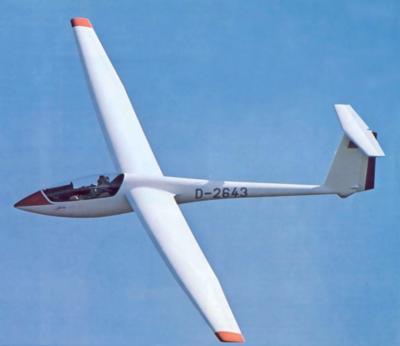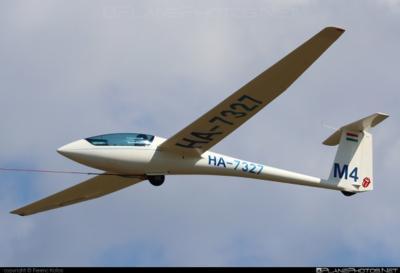Wed, Oct 11, 2023
Devil Complacency
The NTSB has released its final report on a 16 April 2022 accident in which a Schleicher ASW-19B glider was substantially damaged and its Private Pilot rated operator (and sole occupant) was fatally injured shortly after departing Jacksonville, Florida’s Herlong Recreational Airport (HEG).

The accident-aircraft was operated as a personal flight under Part 91 of the Federal Aviation Regulations.
In its report, the NTSB set forth:
“Shortly after the tow airplane and the glider became airborne, the pilot of the glider released from the tow plane about two-hundred-feet above ground level, then entered a left turn back toward the runway, during which the glider impacted terrain. Witnesses to the accident described the glider’s takeoff as “abnormal” and “erratic” and reported that the glider climbed above the tow plane twice before the glider pilot released from tow.
“Post-accident examination of the glider revealed that the elevator control was not connected as required by preflight assembly procedures, which would have resulted in the pilot’s inability to control the glider’s pitch attitude. According to the tow pilot, the glider pilot had assembled the glider by himself—as he had done many times before—on the morning of the accident. It is likely that the pilot, had he completed a positive control check after assembling the aircraft, would have identified the disconnected elevator control.

“Toxicology testing identified two sedating drugs, cetirizine (Zyrtec) and trazodone (an antidepressant), in the pilot’s cavity blood and urine; however, the pilot’s use of these medications most likely did not contribute to the accident.”
The NTSB determined the accident had likely been caused by the pilot’s improper preflight assembly of the glider’s elevator control, which occasioned a loss of pitch control on takeoff. The Board ascribed the accident, also, to the pilot’s failure to complete a preflight positive control check, which would have identified the disconnected elevator control.
More News
Back-Taxi A term used by air traffic controllers to taxi an aircraft on the runway opposite to the traffic flow. The aircraft may be instructed to back-taxi to the beginning of the>[...]
“Our WAI members across the nation are grateful for the service and sacrifice of the formidable group of WASP who served so honorably during World War II. This group of brave>[...]
“Many aspiring pilots fall short of their goal due to the cost of flight training, so EAA working with the Ray Foundation helps relieve some of the financial pressure and mak>[...]
Blind Speed The rate of departure or closing of a target relative to the radar antenna at which cancellation of the primary radar target by moving target indicator (MTI) circuits i>[...]
Aero Linx: International Airline Medical Association (IAMA) The International Airline Medical Association, formerly known as the Airline Medical Directors Association (AMDA) was fo>[...]
 ANN's Daily Aero-Term (05.19.24): Back-Taxi
ANN's Daily Aero-Term (05.19.24): Back-Taxi Aero-News: Quote of the Day (05.19.24)
Aero-News: Quote of the Day (05.19.24) Aero-News: Quote of the Day (05.20.24)
Aero-News: Quote of the Day (05.20.24) ANN's Daily Aero-Term (05.20.24): Blind Speed
ANN's Daily Aero-Term (05.20.24): Blind Speed ANN's Daily Aero-Linx (05.20.24)
ANN's Daily Aero-Linx (05.20.24)




